Table of contents
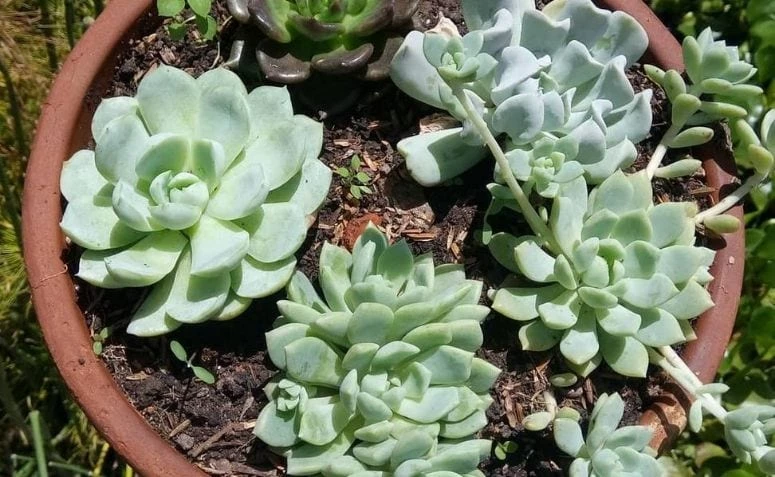
Looking for a succulent for your home? The echeveria may be the ideal choice! Also known as the stone rose, because of its shape that resembles this plant, the echeveria brings a lot of beauty to the environment. Since there are several types of it, you can still choose the one that pleases you the most.
7 types of echeveria to grow and decorate your home
Since there are several types of echeverias, it is important to know the differences between each one to know which plant suits you best. With this in mind, we have listed the characteristics of very popular echeverias. Check them out!

- Elegans: also known as Mexican snowball, echeveria elegans has numerous rosette-shaped leaves with a bluish-green coloration. This type of echeveria generally measures between 5 and 20 centimeters tall. In the warmer months of the year, it can bear small, pinkish-yellow flowers.
- Glauca: There is a lot of confusion about which is the real echeveria glauca, since it is often confused with peackokii. To identify it, you just have to look at the leaves, since the glauca leaves are more rounded. Besides, glauca grows fast and can reach "giant" sizes (between 8 and 12 centimeters in diameter).
- Lilacine: lilacina is also known as ghost echeveria, due to its grayish-white color. It is a small echeveria, reaching a maximum of 20 centimeters in height, so it is a good choice if you don't have much space. In spring, it can produce yellowish tubular flowers.
- Orion: This type of echeveria has very characteristic leaves, since they have a grayish green color and reddish tips. orion can reach up to 20 centimeters in height. like the other echeverias, this one also has a shape similar to a rose when seen from above.
- Stolonifera: The echeveria stolonifera has green, pointed leaves. This is one option of the plant that multiplies a lot, and can also give pink flowers inside and yellowish outside.
- Shaviana: This is another echeveria that has very characteristic leaves, as these are wavy at the tips, like a cabbage. The leaves also have a bluish color with pinkish tones at the edges. In the warmer months of the year, shaviana can present very delicate pink flowers that can reach up to 30 centimeters in height.
- Imbricata: Besides having light bluish green leaves, the echeveria imbricata is very symmetrical. This variation of the plant hardly ever bears flowers, but they can appear in spring and summer. These have long stems, are orange and bell-shaped.
The echeveria has more than 1000 variations, but these 7 listed are the easiest types to find on the market. Regardless of which option you choose, you will be beautifying your space by putting this little plant in it!
How to care for an echeveria
After choosing the variation of echeveria, it is necessary to check how to grow it, so that the plant receives the necessary care and grows strong in your home. Therefore, we have separated 4 videos that cover the main care in the cultivation of the plant and more relevant information for the proper growth of echeveria. Check them out!
Basic echeveria care tips
In order for a plant to grow properly, it needs to receive several specific cares. By watching this video, you will learn exactly what are the basic cares needed to grow echeveria, such as the frequency of watering and the ideal sun exposure.
See_also: Colors that go with blue: options for all tastesHow to prune and repot echeveria
As the echeveria grows from its center, it can extend beyond the area of the pot or bed in which it was planted, so in some cases pruning and even repotting is necessary. In this video you will learn how to do both of these activities and also how to create seedlings of this succulent!
6 types of echeverias easy to care for
In this video, you will see particularities of 6 types of echeverias: perle von nurnberg, pumila, gilva, orion, pallida, and glauca. Although they are easy to cultivate, as mentioned in the video, it is important to remember that the climate of the region influences this facility.
How to plant echeveria lilacina
This video specifically teaches you step-by-step how to plant echeveria lilacina, but even if this is not the one you have chosen for your home, it is important to watch it, because it gives you tips on substrate and drainage that may be useful for your echeveria.
Once you have learned the basics of echeveria care, how to plant it, replant it, and make seedlings, simply follow the tips given in your home. That way your echeveria will be able to grow properly and develop beautifully!
See_also: How to decorate a Noah's Ark cake for a cute party50 echeveria succulent photos that prove the beauty of this plant
If you still don't know where to put this beautiful plant in your home, check these pictures for inspiration, and, of course, to prove the beauty of the echeveria!
1. echeveria is such a beautiful plant

2. that can be grown at home

3. and even used in events

4. at home, it can be grown in several places

5. as in a garden
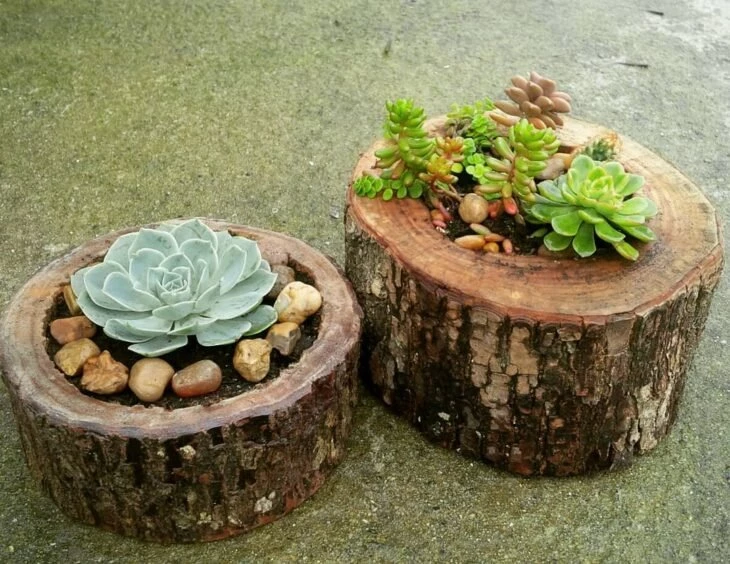
6. to beautify the outside area
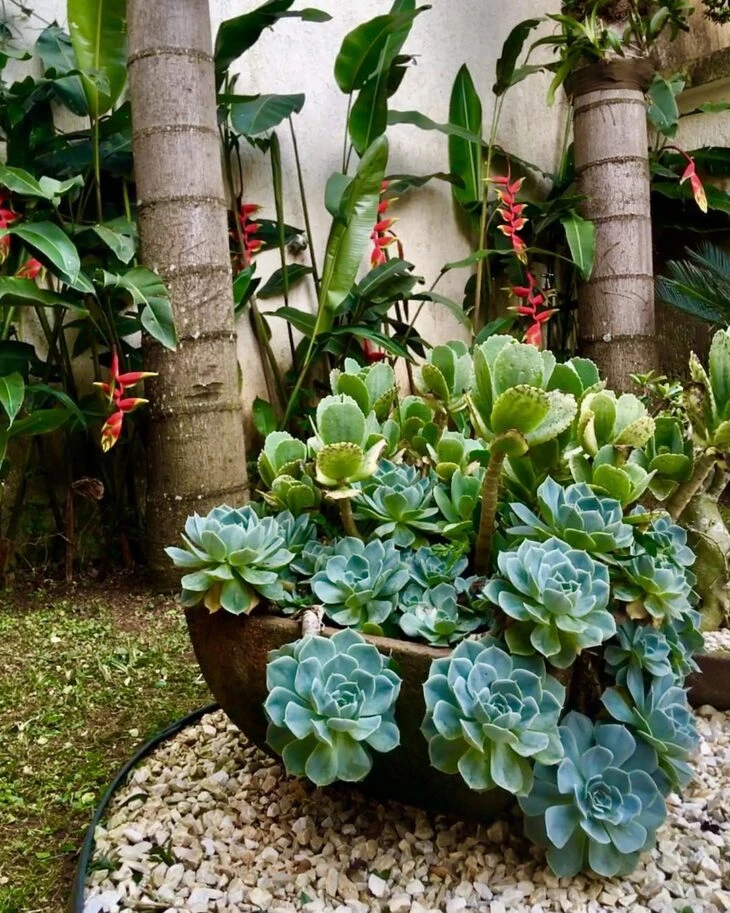
7. in the indoor area, it can be in the window

8. decorate the center of a table

9. or even a less obvious place

10. i.e., you don't need a lot of space to grow it
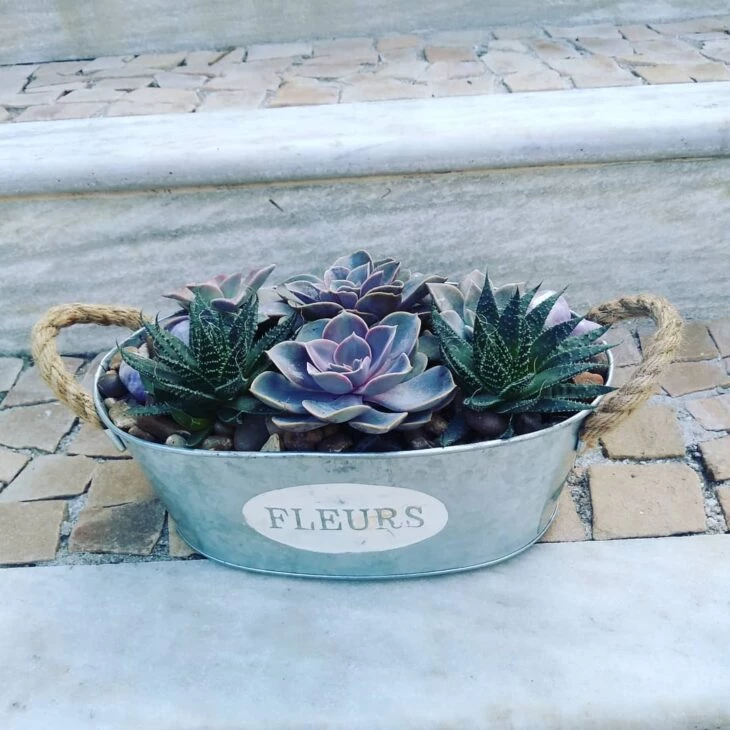
11. a small shelf is great for your echeverias
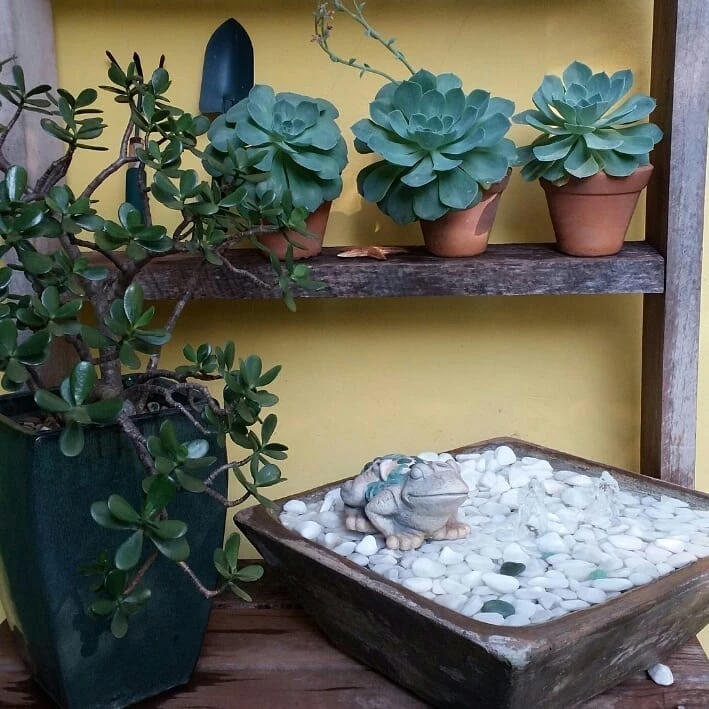
12. how about a chandelier?
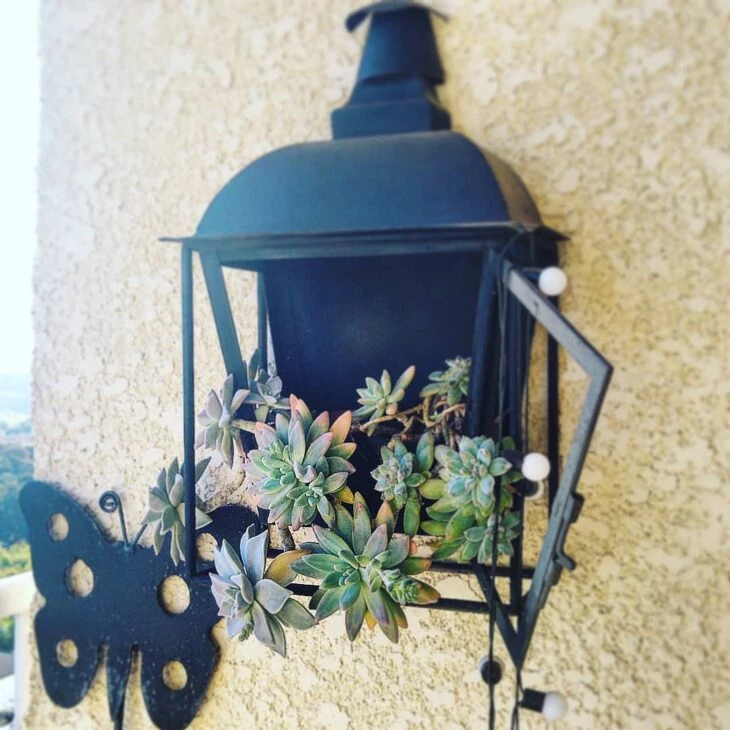
13. you can leave it pending

14. since it looks charming and doesn't take up space

15. another great way to grow echeveria
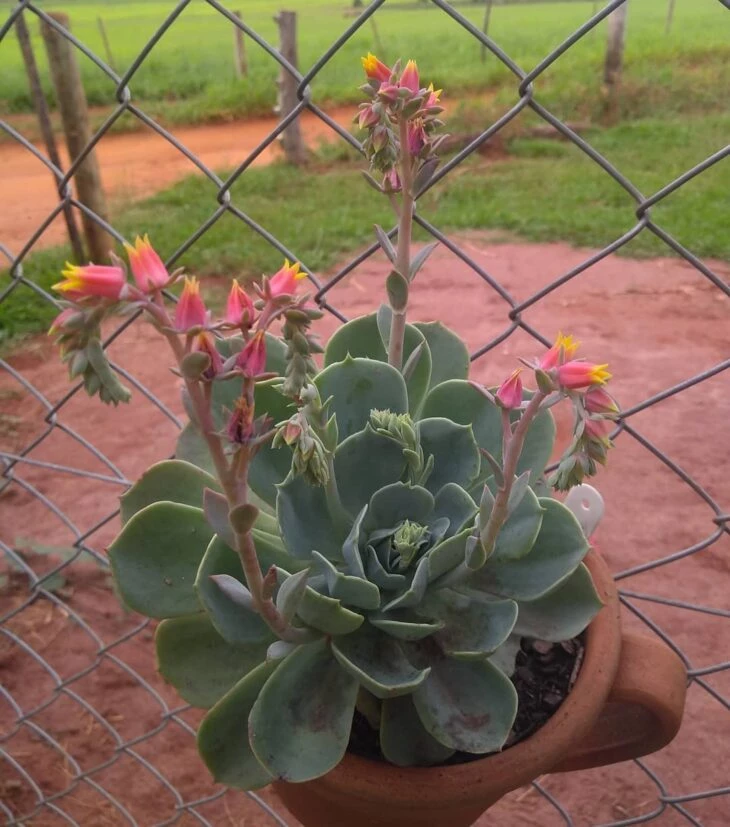
16. you can even fix it to the floor

17. how about growing this plant in a terrarium

18. or in the form of a kokedama?

19. regardless of the form and the location chosen
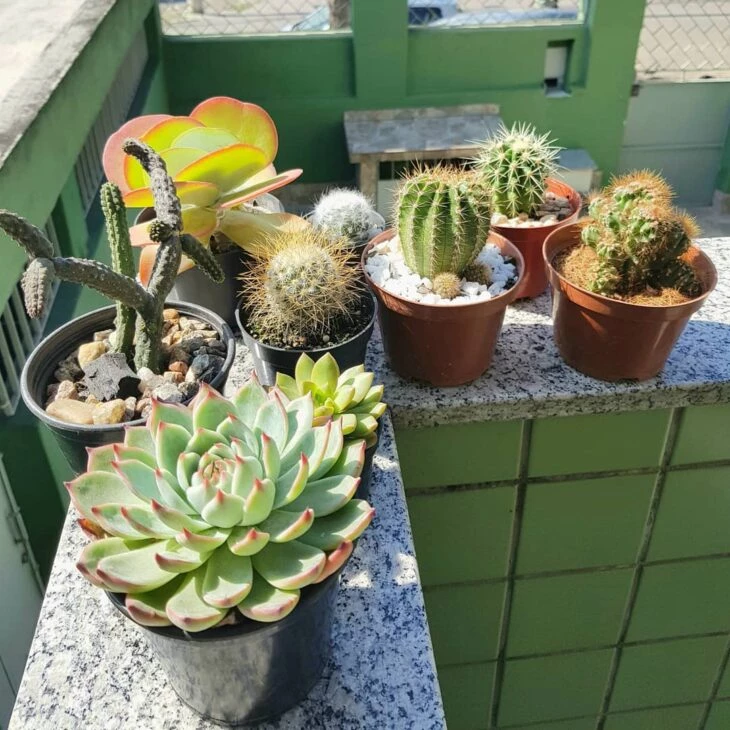
20. remember to leave your plant in the sun

21. because she needs at least a few hours of light
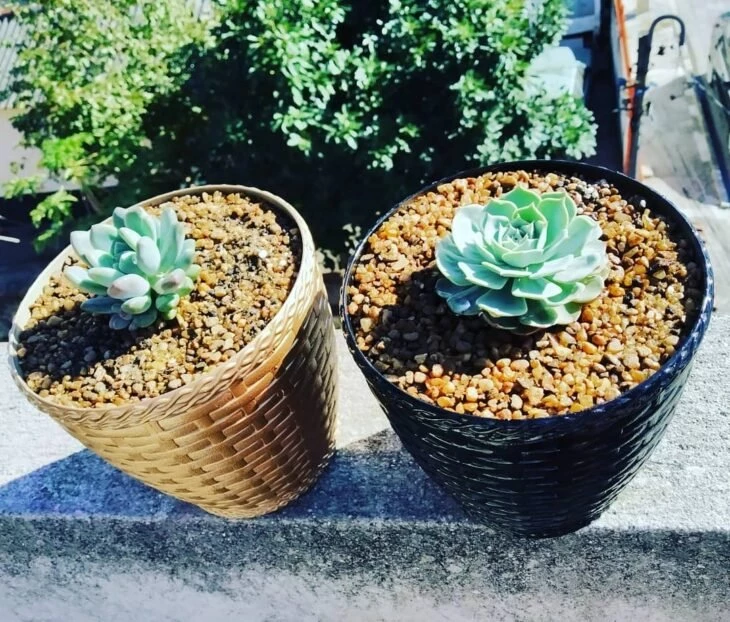
22. to grow up this beautiful

23. some types of echeveria give flowers

24. and make your environment even more beautiful

25: See how they colored this vase!

26. and this garden too

27. besides choosing an echeveria with flowers

28. you can plant several echeverias together
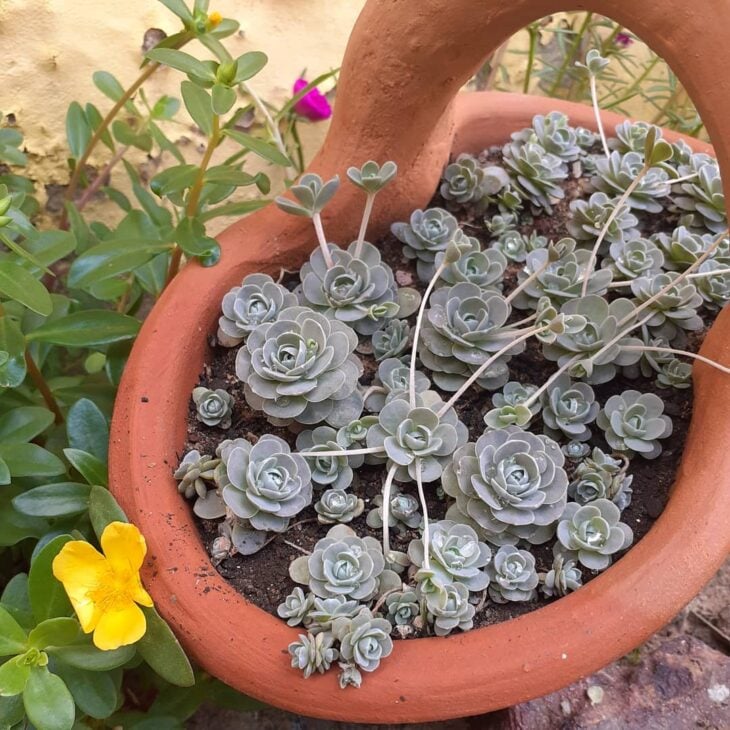
29. or grow it with other plants

30. to make your space more charming

31. cacti go well with echeverias

32. and other types of succulents too

33. you can plant them in the same pot

34. and place them, for example, in the center of the table

35. or make a plant corner

36. cute, don't you think?

37. to choose the vase well is also important

38. to enhance your decoration

39. it can be flashy

40. fun

41. or delicate

42. and even a cup... Why not?

43. remember to choose well the type or types of echeveria
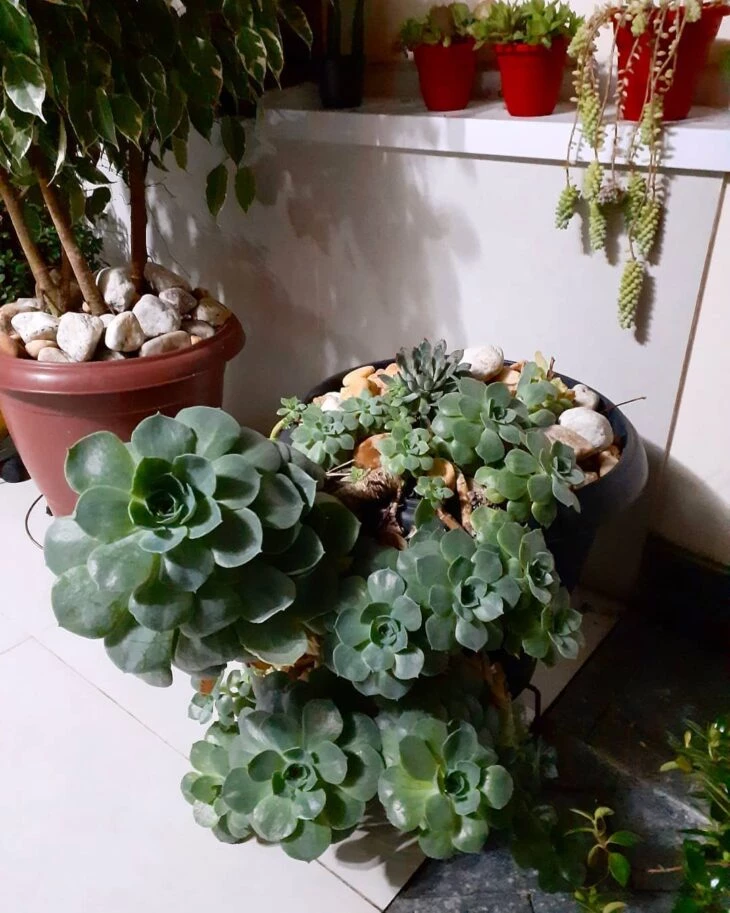
44. to match what you imagined

45. shaviana is great for delicate places

46. with its wavy edges

47. black prince is darker and more sober

48. then, just think about your goal

49. to find the perfect echeveria!

After seeing these pictures, you already know which echeveria you will grow? Regardless of the type you choose, it won't give you much trouble and will still bring charm to your environment! If you want to know other succulents to grow, check out 10 types of succulents to have in your home.


